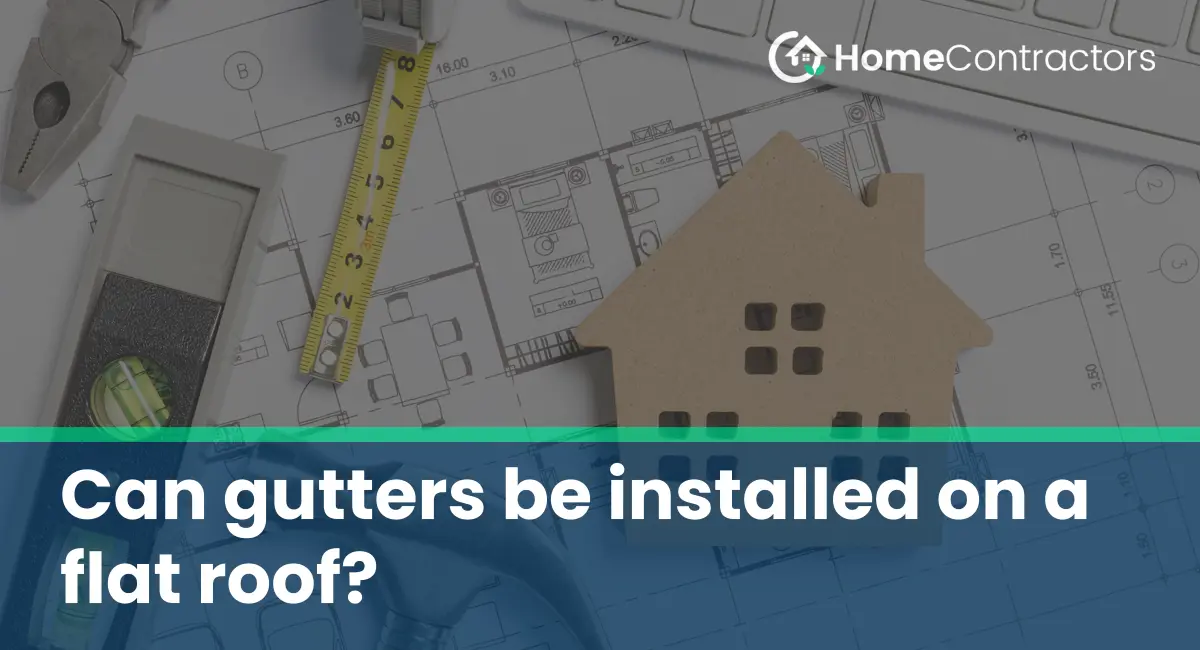A flat roof is a popular choice for commercial and residential buildings due to its minimal maintenance requirements and modern aesthetics. However, one common concern with flat roofs is the lack of natural drainage. Without a slope to direct water towards the edges, flat roofs are prone to pooling water, which can cause structural damage and leaks over time. To mitigate this issue, many property owners wonder if it is possible to install gutters on a flat roof. In this article, we will explore the feasibility of installing gutters on a flat roof and the different options available.
Understanding the Challenges of Installing Gutters on a Flat Roof
Before delving into the specifics of gutter installation on flat roofs, it is essential to understand some of the challenges that arise with this type of roofing structure. Generally, flat roofs have a very slight slope, known as a “micro-slope,” which is designed to support water runoff. However, this slope is often insufficient to ensure efficient drainage, especially during heavy rains or snowstorms. Moreover, a flat roof typically lacks the eaves and soffits that are necessary for traditional gutter installation. These challenges necessitate alternative solutions for guttering on flat roofs.
Options for Gutter Installation on a Flat Roof
Although the lack of eaves and soffits poses a challenge, several options are available for installing gutters on a flat roof. The choice of guttering system largely depends on the specific needs and preferences of the property owner. Let’s explore some of the common alternatives:
1. Internal Gutters:
Internal gutters, also known as box gutters, are concealed within the roof structure itself. They are usually installed at the edges of the roof or along the perimeter walls. Internal gutters require careful construction to ensure proper water flow and prevent leaks. While they offer a discreet solution for flat roofs, they may require regular maintenance to prevent clogging and ensure proper functionality.
2. Tapered Insulation Systems:
Tapered insulation is an innovative approach that incorporates the sloping effect into the roof design. By installing layers of insulation material with varying thicknesses, a tapered insulation system creates a gentle slope on the flat roof that helps direct water towards designated drainage points. This method allows for the installation of traditional gutters on the eaves or parapet walls. Tapered insulation not only facilitates proper drainage but also enhances the energy efficiency of the building.
3. External Drains and Scuppers:
Another option for flat roof guttering is the utilization of external drains and scuppers. These are outlets strategically placed along the roof’s perimeter that allow water to drain off the roof. While not traditional gutters per se, external drains and scuppers effectively divert water away from the roof’s surface. Additionally, they can be combined with downspouts to further direct the water flow.
While installing gutters on a flat roof presents unique challenges, it is indeed possible to implement effective water management systems. Internal gutters, tapered insulation systems, and external drains or scuppers are all viable solutions for flat roof guttering. Property owners should carefully consider their specific requirements, consult with roofing professionals, and choose the option that best suits their needs. Adequate drainage is crucial for ensuring the longevity and integrity of flat roof structures, and installing guttering systems is a valuable investment towards achieving this goal.
